Christianity has declined so significantly in Europe, that to be non-religious may now be considered the default. A new survey of young adults across Europe allows some insight into the situation
>The survey of 16- to 29-year-olds found the Czech Republic is the least religious country in Europe, with 91% of that age group saying they have no religious affiliation. Between 70% and 80% of young adults in Estonia, Sweden and the Netherlands also categorize themselves as non-religious.
>The most religious country is Poland, where 17% of young adults define themselves as non-religious, followed by Lithuania with 25%.
>In the Czech Republic, 70% said they never went to church or any other place of worship, and 80% said they never pray. In the UK, France, Belgium, Spain and the Netherlands, between 56% and 60% said they never go to church, and between 63% and 66% said they never pray.
>Among those identifying as Catholic, there was wide variation in levels of commitment. More than 80% of young Poles say they are Catholic, with about half going to mass at least once a week. In Lithuania, where 70% of young adults say they are Catholic, only 5% go to mass weekly.
Muslims are on the verge of overtaking Anglicans
>In the UK, only 7% of young adults identify as Anglican, fewer than the 10% who categorize themselves as Catholic. Young Muslims, at 6%, are on the brink of overtaking those who consider themselves part of the country’s established church.
But as a whole, religion is dying in Europe
>"Religion was “moribund”, he said. “With some notable exceptions, young adults increasingly are not identifying with or practizing religion.” The trajectory was likely to become more marked. “Christianity as a default, as a norm, is gone, and probably gone for good – or at least for the next 100 years,”
Interestingly, Nations geographically close to each other often have very different levels of religiosity.
>But there were significant variations, he said. “Countries that are next door to one another, with similar cultural backgrounds and histories, have wildly different religious profiles."
http://archive.is/LfzZM
Chart of indentifying with religion
https://via.hypothes.is/https://interactive.guim.co.uk/charts/embed/mar/2018-03-20T16:19:17/embed.html
Chart of attending religious services
https://via.hypothes.is/https://interactive.guim.co.uk/charts/embed/mar/2018-03-20T16:33:55/embed.html
Chart of frequency of prayer
https://via.hypothes.is/https://interactive.guim.co.uk/charts/embed/mar/2018-03-20T16:34:37/embed.html
\r
/mlpol/ - My Little Politics
Archived thread
1522471838.jpg (63.8 KB, 598x348, BD5941E2-F589-4A4F-B09E-D9F9760D0FC4.jpeg)
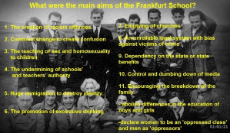
Well to be honest, what did you expect it’s all going according to plan
>>134702
Your ancestors only had to listen to the truly logical men of history that predated them, but oh, the shekelbergs knew better than they ever could. Before the current usury scheme of an all powerful, all knowing, omnipotent deity that was both somehow senile and a mass murderer with a fetish for slavery and sadomasochism, there were other deities. Before those, there were other deities. The world has allowed itself to be destroyed, and for what? Nothing. Religion was never civilized, only the civilized were forcibly whipped into submission by the external insanity called religion.
Your ancestors only had to listen to the truly logical men of history that predated them, but oh, the shekelbergs knew better than they ever could. Before the current usury scheme of an all powerful, all knowing, omnipotent deity that was both somehow senile and a mass murderer with a fetish for slavery and sadomasochism, there were other deities. Before those, there were other deities. The world has allowed itself to be destroyed, and for what? Nothing. Religion was never civilized, only the civilized were forcibly whipped into submission by the external insanity called religion.
As an altright atheist myself, race culture is more important to me than religious culture, athough they are heavily tied together which is why I respect christianity. Unfortunately there are many white sjw shitlibs that makes it more difficult.
1522479876_1.jpg (324.0 KB, 864x1024, 66E3F573-C222-4103-8F97-8016D2191685.jpeg)
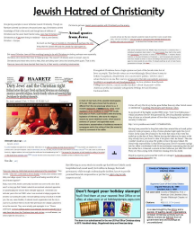
1522479876_2.png (129.2 KB, 575x607, 3DFA8939-F285-439F-AF9B-F26FEF8D24A9.png)
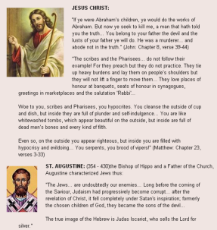
1522479876_3.png (334.9 KB, 870x1730, B09D987B-C604-489D-8FD7-0A5C6C6090F7.png)
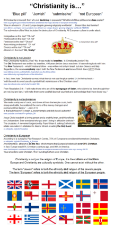
1522479876_4.jpg (350.9 KB, 1892x1049, 36BD9EA4-8184-4D75-96E7-8847A73787AE.jpeg)

1522479876_5.png (168.2 KB, 1371x286, 5D79C279-6B25-4FEE-84D4-0A6439989790.png)

1522480016_1.png (1.3 MB, 1578x6054, 40F21437-3D17-497E-93AC-C750F4CA7500.png)

1522480016_2.jpg (3.6 MB, 3884x7735, EB46757C-9754-4522-AFAC-4CAA2E77E686.jpeg)

1522480016_3.png (813.5 KB, 900x3186, A99AD604-2253-4E71-B14F-807E2EFEE4C6.png)

1522480016_4.jpg (171.3 KB, 612x1024, 522275B2-EC0E-45C9-95B3-513450924C5F.jpeg)
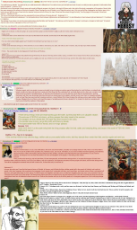
1522480016_5.png (182.9 KB, 1005x753, 3EE46110-70F2-40D5-AC6B-130E80262876.png)
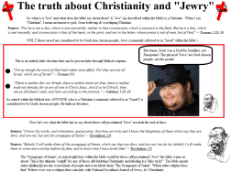
maybe i'll start caring about religions when the church stops forcing me to not work and keep my shop closed on THEIR holidays.
maybe.
maybe.
The church is run by socialists and Jesus was a protomarxist. Deism is the only way forward.
>>134718
I started taking the idea of nationalism and identity more seriously at least in part because I don't have the idea of religion to fall back on. People need something to rally around, something to make them feel part of something bigger and to work together as a group.
For me that unifying thing won't be religion, so what other options are there? Let's see, there is culture, language, geography and kin; and well, that sounds a lot like the things that unify a nation.
I hear a lot of people saying that nationalism is stupid, that we should just be people and live freely in all of the world, speak only one language and that sort of thing. It sounds like a nice idea at first, but without some kind of grand idea to unite all of humanity it would just lead to alienation, people living miserable lives and wasting their time going between the concrete boxes that are "home" and "work" and trying not to think too much about whether it all has any meaning.
I started taking the idea of nationalism and identity more seriously at least in part because I don't have the idea of religion to fall back on. People need something to rally around, something to make them feel part of something bigger and to work together as a group.
For me that unifying thing won't be religion, so what other options are there? Let's see, there is culture, language, geography and kin; and well, that sounds a lot like the things that unify a nation.
I hear a lot of people saying that nationalism is stupid, that we should just be people and live freely in all of the world, speak only one language and that sort of thing. It sounds like a nice idea at first, but without some kind of grand idea to unite all of humanity it would just lead to alienation, people living miserable lives and wasting their time going between the concrete boxes that are "home" and "work" and trying not to think too much about whether it all has any meaning.
>>134853
Study the classics. Read plato, study Pythagoras, read the Kybalion and the sagas and vedic texts. Just read until you discover something profound, and you will find what you need. I found the writings of Miguel Serrano, only after reading the above and reaching the point I could question anything objectively, and his works (in Nos specifically) were the precise texts I had saught to confirm my dreams for years... and in the process, I learned what real poetry is.
Just keep seeking truth, and be objective.
Study the classics. Read plato, study Pythagoras, read the Kybalion and the sagas and vedic texts. Just read until you discover something profound, and you will find what you need. I found the writings of Miguel Serrano, only after reading the above and reaching the point I could question anything objectively, and his works (in Nos specifically) were the precise texts I had saught to confirm my dreams for years... and in the process, I learned what real poetry is.
Just keep seeking truth, and be objective.
>>134853
I personally think being skeptic about supernaturalism and focusing on objective empiric truth is a form of identity that unite all the atheists against being threatfully imposed anything that comes from a religious counterculture.
On the other hand, religious identities are mostly based around old scriptures so that creates a lot of disagreement even between the people who believe in the same God.
I personally think being skeptic about supernaturalism and focusing on objective empiric truth is a form of identity that unite all the atheists against being threatfully imposed anything that comes from a religious counterculture.
On the other hand, religious identities are mostly based around old scriptures so that creates a lot of disagreement even between the people who believe in the same God.
>>134910
Around what exactly? "Objective Empiric Truth"? Whose "objective empiric truth"? Mine, yours? And where are values to be derived from it?
Around what exactly? "Objective Empiric Truth"? Whose "objective empiric truth"? Mine, yours? And where are values to be derived from it?
>>134910
It never works that way. "Objective empiric truth" can be interpreted any number of ways. Even empirical truth is not an ideal method of gathering information as praxeological professor Hans-Hermann Hoppe points out.
As long as you have atheism you'll have people disagreeing on what's "objectively" good. You'll always have Marxists and Objectivists. Say what you want about scripture but religions are built around a core set of principles and morals that cannot be superseded.
It never works that way. "Objective empiric truth" can be interpreted any number of ways. Even empirical truth is not an ideal method of gathering information as praxeological professor Hans-Hermann Hoppe points out.
As long as you have atheism you'll have people disagreeing on what's "objectively" good. You'll always have Marxists and Objectivists. Say what you want about scripture but religions are built around a core set of principles and morals that cannot be superseded.
>>134912
Check the Objectivist philosophy out. Objective is never yours or mine.
>>134915
At least it's some short of philosophical debate instead of forcing people to do what they were revelated from the heavens :shrug:
Different people feel differently about same topics and your "religious" experience should never determine mine. Just because you feel it some way doesn't mean the rest of the world is feeling it that way.
Also marxists suck because you don't get to own the shit you work for. Case closed :P
Check the Objectivist philosophy out. Objective is never yours or mine.
>>134915
At least it's some short of philosophical debate instead of forcing people to do what they were revelated from the heavens :shrug:
Different people feel differently about same topics and your "religious" experience should never determine mine. Just because you feel it some way doesn't mean the rest of the world is feeling it that way.
Also marxists suck because you don't get to own the shit you work for. Case closed :P
>>134926
You mean Ayn Rand's Objectivism? In the section of Atlas Shrugged where John Galt gives his speech detailing the Objectivist philosophy, they still state that the reason by which you are the judge of things is "your own." Every man is the judge of the truth, and naturally they don't agree
You mean Ayn Rand's Objectivism? In the section of Atlas Shrugged where John Galt gives his speech detailing the Objectivist philosophy, they still state that the reason by which you are the judge of things is "your own." Every man is the judge of the truth, and naturally they don't agree
>>134934
The thing is people who don't practise your religion don't think you are given your truth by a god, but that it's your own truth. Literally every religion except the person's believes that. That's why we should try to explore truth with the word (anarchicaly) and not by imposing any religion.
Now, facts are objective. The reality we can see, touch and experiment with is objective. Gravity formulas apply the same in both of our countries. I don't own science, and no one does. That's why it's a valid, objective and universal source of truth.
The thing is people who don't practise your religion don't think you are given your truth by a god, but that it's your own truth. Literally every religion except the person's believes that. That's why we should try to explore truth with the word (anarchicaly) and not by imposing any religion.
Now, facts are objective. The reality we can see, touch and experiment with is objective. Gravity formulas apply the same in both of our countries. I don't own science, and no one does. That's why it's a valid, objective and universal source of truth.
>>134936
Scientists don't always agree though. Have you seen the disagreements between biologists on whether group selection occurs in Evolution?
And if they do agree, so what? Questions about for what we should live are not answerable by science
Scientists don't always agree though. Have you seen the disagreements between biologists on whether group selection occurs in Evolution?
And if they do agree, so what? Questions about for what we should live are not answerable by science
>>134915
>Say what you want about scripture but religions are built around a core set of principles and morals that cannot be superseded.
What? Religions constantly fracture and argue over their core principles and morals.
Among Christians, you can count Catholicism, Eastern Orthodoxy, Protestantism, Anglicanism, and more esoteric splinter factions such as the Mormons and Jehovah's Witnesses, just to name a very select few. Every one of these groups has disagreements, sometimes very major ones, over their principles and morals.
The mudslimes have a good deal less splinter groups, comprising Sunnis, Shiites, and the distinctly kike-like Salafis. Their differences are a good deal more bloody in outcome, however.
Speaking of kikes, their faith is also split along the lines of Reformists, Masorti, Orthodox, and Zionism, to name a few. Even the Ashkenazi Jews have their own spins on Judaism.
>Say what you want about scripture but religions are built around a core set of principles and morals that cannot be superseded.
What? Religions constantly fracture and argue over their core principles and morals.
Among Christians, you can count Catholicism, Eastern Orthodoxy, Protestantism, Anglicanism, and more esoteric splinter factions such as the Mormons and Jehovah's Witnesses, just to name a very select few. Every one of these groups has disagreements, sometimes very major ones, over their principles and morals.
The mudslimes have a good deal less splinter groups, comprising Sunnis, Shiites, and the distinctly kike-like Salafis. Their differences are a good deal more bloody in outcome, however.
Speaking of kikes, their faith is also split along the lines of Reformists, Masorti, Orthodox, and Zionism, to name a few. Even the Ashkenazi Jews have their own spins on Judaism.
>>134938
Then it can't be said to be an undeniable truth. Also noone will look you bad for arguing for something that isn't rebutted. They don't have any moral reason to do so, they won't think you are what their god hates. Rather, they will acknowledge you are seeking the truth.
>>134938
But they are by philosophy. See >>134937. Objectivists answer those questions.
Then it can't be said to be an undeniable truth. Also noone will look you bad for arguing for something that isn't rebutted. They don't have any moral reason to do so, they won't think you are what their god hates. Rather, they will acknowledge you are seeking the truth.
>>134938
But they are by philosophy. See >>134937. Objectivists answer those questions.
>>134727
>>134732
Poor job defending your shekel masters, Ausfailia. How long did it take you to How's the 1841 covenant working out for you? Oh, never mind, you failures adopted crypto-kikery in all its forms at the outset to be different from great cuckland. let us get into the real heart of the matter: there is precisely zero historical truth to back up your emotional, illogical screaming complexes. Say for a minute that any of this batshit insane nonsense COULD be true.. and then you walk into the insane whom says: "NEVER QUESTION (((OUR TRUTH)))!" But then you walk into a logical man. The man says: "NEVER CEASE DEMANDING ANSWERS!"
The reason why you and the other brit-cucked slaves lost Gallipoli was this: Cuckshill was told to make the operation fail so his zionist masters could further indoctrinate ANZAC to their whims on the basis of being a losing power. Being guilted and shamed so often about "how we lost the war for our masters is so terrible", isn't it? How many monopolies, megacorporations, and oy veys dominates your government? How often are you told to accept what is "good for you" but not for (((them)))? Becoming forcibly blinded by your own apathy is no excuse for allowing yourselves to be cucked.
>>134732
Poor job defending your shekel masters, Ausfailia. How long did it take you to How's the 1841 covenant working out for you? Oh, never mind, you failures adopted crypto-kikery in all its forms at the outset to be different from great cuckland. let us get into the real heart of the matter: there is precisely zero historical truth to back up your emotional, illogical screaming complexes. Say for a minute that any of this batshit insane nonsense COULD be true.. and then you walk into the insane whom says: "NEVER QUESTION (((OUR TRUTH)))!" But then you walk into a logical man. The man says: "NEVER CEASE DEMANDING ANSWERS!"
The reason why you and the other brit-cucked slaves lost Gallipoli was this: Cuckshill was told to make the operation fail so his zionist masters could further indoctrinate ANZAC to their whims on the basis of being a losing power. Being guilted and shamed so often about "how we lost the war for our masters is so terrible", isn't it? How many monopolies, megacorporations, and oy veys dominates your government? How often are you told to accept what is "good for you" but not for (((them)))? Becoming forcibly blinded by your own apathy is no excuse for allowing yourselves to be cucked.
1522717340.gif (552.8 KB, 500x244, F40F36CA-33F0-44B3-9A1F-BDC4FDB74CC2.gif)

>>136199
I'm going to bite back my usual snide shitposting for just a minute here, and instead ask you a genuine question.
I've seen you around in various threads, constantly attacking the belief systems of other anons here. What you attack, and why you attack it, is of little consequence or relevance to me: what is important, is that you are attacking it, and in a very consistent, often aggravated manner.
If you're that invested in deconstructing the beliefs of others, it brings me to my question:
What are your beliefs?
I'm going to bite back my usual snide shitposting for just a minute here, and instead ask you a genuine question.
I've seen you around in various threads, constantly attacking the belief systems of other anons here. What you attack, and why you attack it, is of little consequence or relevance to me: what is important, is that you are attacking it, and in a very consistent, often aggravated manner.
If you're that invested in deconstructing the beliefs of others, it brings me to my question:
What are your beliefs?
>>136213
Not the anon you are talking to, but I think he might agree. My belief is that for humanity to move forward we need to drop the regressive ways of religions, and instead of looking for truth in the past human systems and opinions, we should focus on what we can learn and find out right now. Thats what I personaly strive for
Not the anon you are talking to, but I think he might agree. My belief is that for humanity to move forward we need to drop the regressive ways of religions, and instead of looking for truth in the past human systems and opinions, we should focus on what we can learn and find out right now. Thats what I personaly strive for
>>136396
Cant say I know it so Im not going to associate with it. I said what I said and thats all. Ill have to research what this frankfurt school is before I adopt any labels.
Cant say I know it so Im not going to associate with it. I said what I said and thats all. Ill have to research what this frankfurt school is before I adopt any labels.
1522753717.jpg (1.0 MB, 2488x5572, 63E957F4-0D0B-4BA3-A331-13ADFD5F804F.jpeg)

>>136399
I mean, I dont agree fully with its view on objectivity of things and maybe a few other claims. Id say Im about 80% compatible with Frankfurt school. So why is that relevant?
I mean, I dont agree fully with its view on objectivity of things and maybe a few other claims. Id say Im about 80% compatible with Frankfurt school. So why is that relevant?
A group of colective values have to exist, like the gender roles, am suprised that all you're argumentation is based on "relativist reallity" it is insane that so many right wingers are falling in this cheap shit, reality it's completely absolute, if it isn't in something, it's because we don't know it.
About the empirical thing, if gender roles work and eleminating it screw things up, why the fuck to not following it because you don't understand why?
Religion could help you a lot to maintain this values in, if you do it right.
About the empirical thing, if gender roles work and eleminating it screw things up, why the fuck to not following it because you don't understand why?
Religion could help you a lot to maintain this values in, if you do it right.
>>136395
Exacly, there are many in the bible that could help, just see the right translation anon, deuteronomy actually said that foreing people and the mixed ones have to be away of political power.
https://ehudwould.wordpress.com/2009/12/02/the-mamzer-of-deuteronomy-232/
Exacly, there are many in the bible that could help, just see the right translation anon, deuteronomy actually said that foreing people and the mixed ones have to be away of political power.
https://ehudwould.wordpress.com/2009/12/02/the-mamzer-of-deuteronomy-232/
>>136210
That's nice you descendant of degenerate britcucks. Can you shill any harder or does your ShareBlue/CAP/Soros Foundation handbook only tell you how to be a nuisance?
>>136213
Religion, especially organized religion, is the greatest crime against humanity. The overall goal of organized religion is an ideological design to create and institute suppression, manipulation, dehumanization, with the total goal of crippling and outright destroying the scientific method. Eventually, the end game becomes controlling a population with a total lack of common sense whom become willing, servile, submissive slaves whom are unable to think in logical, rational, reasonable, or coherent manners.
As to what I believe? There is a certain intellectual fear in understanding the contiguous cycles of humanity's deeply flawed past, particularly the 100 year event cycle and the 309 year weather cycle. Since both are scientifically proven, they can be relied upon with a >95% success ratio in extrapolating the events which will take place. For example, the 1917 German/Hungarian/Italian Communist Revolts have cycled around to 2017, yet in this case what occurred was the Antifa movement in the US & numerous Neo-Marxist Socialist Revolts across the globe. Numbers and historical facts do not lie, all else, including organized religion, is a mind virus; worse than cancer, yet less detectable.
That's nice you descendant of degenerate britcucks. Can you shill any harder or does your ShareBlue/CAP/Soros Foundation handbook only tell you how to be a nuisance?
>>136213
Religion, especially organized religion, is the greatest crime against humanity. The overall goal of organized religion is an ideological design to create and institute suppression, manipulation, dehumanization, with the total goal of crippling and outright destroying the scientific method. Eventually, the end game becomes controlling a population with a total lack of common sense whom become willing, servile, submissive slaves whom are unable to think in logical, rational, reasonable, or coherent manners.
As to what I believe? There is a certain intellectual fear in understanding the contiguous cycles of humanity's deeply flawed past, particularly the 100 year event cycle and the 309 year weather cycle. Since both are scientifically proven, they can be relied upon with a >95% success ratio in extrapolating the events which will take place. For example, the 1917 German/Hungarian/Italian Communist Revolts have cycled around to 2017, yet in this case what occurred was the Antifa movement in the US & numerous Neo-Marxist Socialist Revolts across the globe. Numbers and historical facts do not lie, all else, including organized religion, is a mind virus; worse than cancer, yet less detectable.
1522790450.jpg (369.7 KB, 800x800, 92DC8587-1FAF-4F8C-8135-F4F9B4F5AA07.jpeg)

>>136536
You have given no argument except for autistic screeching and not everyone who doesn’t agree with you is a shill
You have given no argument except for autistic screeching and not everyone who doesn’t agree with you is a shill
>>136565
Typical plebbit shit coming from an Ausfailian jew-lover. Attacking a logical statement by decrying the individual placing them in the open public is called ad hominem, as per the 2015 ShareBlue handbook. Likewise, performing tu quoque combined with attempted subversion by blatantly deploying emotional response bait does not lend your shitposting a virtuous air. Please read "Viruses of the Mind" before continuing, or at the least, attempt to understand your own fallacies better.
Typical plebbit shit coming from an Ausfailian jew-lover. Attacking a logical statement by decrying the individual placing them in the open public is called ad hominem, as per the 2015 ShareBlue handbook. Likewise, performing tu quoque combined with attempted subversion by blatantly deploying emotional response bait does not lend your shitposting a virtuous air. Please read "Viruses of the Mind" before continuing, or at the least, attempt to understand your own fallacies better.
>>136536
I asked for you to explain your beliefs, but instead you've given me a list of opinions, observations, and political theories.
So, I'll ask you again.
What are your beliefs?
I'm quite interested in hearing what you have to say on this matter, so please use as much detail as you can.
I asked for you to explain your beliefs, but instead you've given me a list of opinions, observations, and political theories.
So, I'll ask you again.
What are your beliefs?
I'm quite interested in hearing what you have to say on this matter, so please use as much detail as you can.
>>136536
Scientific atheism it's comunnist, and actually killed millions of christians...
I don't blame you, theres a plenty of non-sensical religious people that would shit thing's up as bad as leftish SJW's, but come on, that's just an specific religious 'doctrine', the one of the "christian hippies" as i like to say, just think about this doctrine where foreing people and mixed ones are banned from the political power, the one of "keep america white and christian".
https://ehudwould.wordpress.com/2009/12/02/the-mamzer-of-deuteronomy-232/
Scientific atheism it's comunnist, and actually killed millions of christians...
I don't blame you, theres a plenty of non-sensical religious people that would shit thing's up as bad as leftish SJW's, but come on, that's just an specific religious 'doctrine', the one of the "christian hippies" as i like to say, just think about this doctrine where foreing people and mixed ones are banned from the political power, the one of "keep america white and christian".
https://ehudwould.wordpress.com/2009/12/02/the-mamzer-of-deuteronomy-232/
1522801241_1.png (7.8 KB, 528x286, 37AF21C5-2B11-498C-A0C8-9F2C44C0CF5F.png)
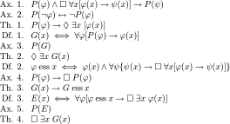
1522801241_2.jpg (63.6 KB, 403x331, 0067B4F5-378F-4CF0-9F51-19B9275D7E37.jpeg)
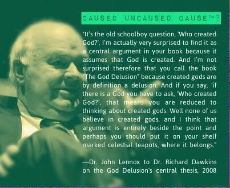
1522801241_3.jpg (125.1 KB, 305x922, 64CD518A-92DC-408D-968C-B65DAD5340B5.jpeg)

1522801241_4.jpg (103.0 KB, 640x457, 1384F07E-1D28-41C3-A908-FB02836526DE.jpeg)

>>136645
Okay what about fundamental physics
1. The fine-tuning of the fundamental physical constants of the universe is due either to physical necessity, chance, or design.
2. Proponents of the anthropic principle assume that because observations of the universe must be compatible with the conscious and sapient life that observes it, it is unremarkable that this universe has fundamental constants that happen to fall within the narrow range thought to be compatible with life -- which is a modal scope fallacy, i.e. it equivocates the necessity of the universe if conscious and sapient life that observes it exists, with modal necessity, i.e. it confuses "necessary if" and "necessary."
3. All physical things have a logical cause.
4. All logically-caused things are contingent, i.e. it is possible for them not to be caused.
5. Therefore, all physical things are contingent.
6. The fundamental physical constants are a physical thing.
7. Therefore, the fundamental physical constants are contingent.
8. Therefore, the fine-tuning of the universe is not due to physical necessity, and the universe, as it is, is not the only possible world.
9. There is an infinite number of possible worlds in which the fine-tuning of the universe and all its antecedents do not exist or are in an infinite number of different states.
10. Therefore, the probability of a possible world in which the fundamental constants exist and fall within the narrow range thought to be compatible with life is ℵ_0/ℵ_0^2 (tends to 0).
11. Therefore, the probability that the fine-tuning of the universe is due to chance is ℵ_0/ℵ_0^2.
12. n/n^2=1/n
13. Therefore, the probability that the fine-tuning of the universe is not due to chance is (ℵ_0 - 1)/ℵ_0 (tends to 1).
14. Therefore, it is due to design.
Okay what about fundamental physics
1. The fine-tuning of the fundamental physical constants of the universe is due either to physical necessity, chance, or design.
2. Proponents of the anthropic principle assume that because observations of the universe must be compatible with the conscious and sapient life that observes it, it is unremarkable that this universe has fundamental constants that happen to fall within the narrow range thought to be compatible with life -- which is a modal scope fallacy, i.e. it equivocates the necessity of the universe if conscious and sapient life that observes it exists, with modal necessity, i.e. it confuses "necessary if" and "necessary."
3. All physical things have a logical cause.
4. All logically-caused things are contingent, i.e. it is possible for them not to be caused.
5. Therefore, all physical things are contingent.
6. The fundamental physical constants are a physical thing.
7. Therefore, the fundamental physical constants are contingent.
8. Therefore, the fine-tuning of the universe is not due to physical necessity, and the universe, as it is, is not the only possible world.
9. There is an infinite number of possible worlds in which the fine-tuning of the universe and all its antecedents do not exist or are in an infinite number of different states.
10. Therefore, the probability of a possible world in which the fundamental constants exist and fall within the narrow range thought to be compatible with life is ℵ_0/ℵ_0^2 (tends to 0).
11. Therefore, the probability that the fine-tuning of the universe is due to chance is ℵ_0/ℵ_0^2.
12. n/n^2=1/n
13. Therefore, the probability that the fine-tuning of the universe is not due to chance is (ℵ_0 - 1)/ℵ_0 (tends to 1).
14. Therefore, it is due to design.
>>136651
I am an Esoteric Hitlerist, if any title would fit my practices. That said, (Protestant) Christians have always made better neighbors than Atheists, mudslimes, kikes, or any other except maybe the Hindu and Buddhist neighbors I had for a while in (((new jersey))).
I am an Esoteric Hitlerist, if any title would fit my practices. That said, (Protestant) Christians have always made better neighbors than Atheists, mudslimes, kikes, or any other except maybe the Hindu and Buddhist neighbors I had for a while in (((new jersey))).
>>136690
Everything by Plato.
Whatever you can manage to scrounge up by the great master Pythagoras.
The Sagas, and/or Children of Odin http://www.sacred-texts.com/neu/ice/coo/index.htm (if you're not into poetry and linguistics yet, just read Children of Odin, and save the rest until you're done with Nos.)
Then the Kybalion. (With a period dictionary at your side to look up words when something doesn't make sense. Language has drifted the past hundred fifty years.) Also note, WHEN THE AUTHOR SPEAKS IN ALL CAPS, yes, he is yelling at you.
Futhark, by Edred Thorson (aka Stephen Flowers, most controversial occultist since Adolf Hitler... absolutely amazing track record, the KKK doesn't even want to admit they knighted him, and he's been kicked out of more groups that he himself founded, than most even know exist.) Regardless of what may be said of the author, his books on the runes are the only modern works that I will attest to the contents of.
>The good stuff
Everything by Miguel Serrano, with Nos: Book of the Resurrection, being the most important and incredible text by far. I did not appreciate poetry, until I read this book. My blood sang to me, as I read it, and it's song brought me to tears repeatedly before I finished. It's advised to first read The Golden Cord(/Thread, depending on translation.), Adolf Hitler the Ultimate Avatar, and The Lightning and the Sun by Savitri Devi, before going to Nos... but it's also said that our path is one that must be walked backwards, against time, to the point of origin.
Everything by Plato.
Whatever you can manage to scrounge up by the great master Pythagoras.
The Sagas, and/or Children of Odin http://www.sacred-texts.com/neu/ice/coo/index.htm (if you're not into poetry and linguistics yet, just read Children of Odin, and save the rest until you're done with Nos.)
Then the Kybalion. (With a period dictionary at your side to look up words when something doesn't make sense. Language has drifted the past hundred fifty years.) Also note, WHEN THE AUTHOR SPEAKS IN ALL CAPS, yes, he is yelling at you.
Futhark, by Edred Thorson (aka Stephen Flowers, most controversial occultist since Adolf Hitler... absolutely amazing track record, the KKK doesn't even want to admit they knighted him, and he's been kicked out of more groups that he himself founded, than most even know exist.) Regardless of what may be said of the author, his books on the runes are the only modern works that I will attest to the contents of.
>The good stuff
Everything by Miguel Serrano, with Nos: Book of the Resurrection, being the most important and incredible text by far. I did not appreciate poetry, until I read this book. My blood sang to me, as I read it, and it's song brought me to tears repeatedly before I finished. It's advised to first read The Golden Cord(/Thread, depending on translation.), Adolf Hitler the Ultimate Avatar, and The Lightning and the Sun by Savitri Devi, before going to Nos... but it's also said that our path is one that must be walked backwards, against time, to the point of origin.
1522804389.png (1.2 MB, 840x4584, C537C480-19E7-4F8A-9A48-4F0798700B9E.png)

>>136697
Cool will look into, I’m pretty big into the paranormal and religions aka I look into /x/ kek
Cool will look into, I’m pretty big into the paranormal and religions aka I look into /x/ kek
>>136649
You've tossed out a loaded question filled with what appears to be personal incredulity on the basis of either confusion or not understanding my point. That is highly irregular and to a point questionable. If it is not obvious enough to you yet, the answer you may be aching for is cold and simple: I have no beliefs. On the contrary, numbers, true historical facts, geology, and a host of sciences do not lie. Unlike cold, solid facts and the logical grounding of the scientific method, the down side of this equation is that the whole of organized religion seeks to perpetuate cycles of human enslavement, scientific destruction, and historical abandonment. Worse, religion teaches "morals" to the non-clergy, yet grants the clergy "authority" to abuse their power to the utmost. They despise their willing or unwilling slaves having any freedom, think, utterly loathe any common man whom is not a blind, fanatically zealous tool, and believe themselves to be above all others. Unlike them, I do care.
You are referring to Marxist neo-athiesm such as what caused the USSR, chinkland, and other nations to enter their own mini-Dark Ages. It is more correctly known as: Marxist judeo-communistic athiesm, a bastardization of judaic control mechanisms with most of the religious overtones stripped from it, syncretized with the idiotic hypothesis of "critical theory" and given unhealthy doses of Freud & Nietzsche psychoanalytic bullshit to control populaces. Just as religion is fundamental, objective insanity, so too is this ideology. Both are
>>136663
John Lennox, the same man whom pushes egotistical judaic notions similar enough to shekelbergs reminiscent of Oppenheimer and his ilk, essentially makes this his sole argument: "science is always proving (((our deity))) does exist". This is an ideological design that does precisely what the fairy tale book does, reeking of derisive pedagogy by stating a glibly crafted pseudo-scientific assertion: "it is what it is, because I say it is". There is not a single gap filled in here except for an insultingly emotional "my facts that I made speak for themselves" plea vaguely disguised as a scientific assertion. Where is the background data from? How was this claim founded? On what basis? What assurances can you, as a mathematician, provide that this is NOT an intentionally illogical fallacy to deride the factual basis of the scientific method? How does a speculative hypothesis based on a suspiciously neat mathematical equation carry demonstrable proof of a singular deity? Attempting to question an assertion such as this that does not even provide a basic burden of proof is ironic especially since it makes itself unarguable, leaving zero tolerance for error whatsoever.
You've tossed out a loaded question filled with what appears to be personal incredulity on the basis of either confusion or not understanding my point. That is highly irregular and to a point questionable. If it is not obvious enough to you yet, the answer you may be aching for is cold and simple: I have no beliefs. On the contrary, numbers, true historical facts, geology, and a host of sciences do not lie. Unlike cold, solid facts and the logical grounding of the scientific method, the down side of this equation is that the whole of organized religion seeks to perpetuate cycles of human enslavement, scientific destruction, and historical abandonment. Worse, religion teaches "morals" to the non-clergy, yet grants the clergy "authority" to abuse their power to the utmost. They despise their willing or unwilling slaves having any freedom, think, utterly loathe any common man whom is not a blind, fanatically zealous tool, and believe themselves to be above all others. Unlike them, I do care.
You are referring to Marxist neo-athiesm such as what caused the USSR, chinkland, and other nations to enter their own mini-Dark Ages. It is more correctly known as: Marxist judeo-communistic athiesm, a bastardization of judaic control mechanisms with most of the religious overtones stripped from it, syncretized with the idiotic hypothesis of "critical theory" and given unhealthy doses of Freud & Nietzsche psychoanalytic bullshit to control populaces. Just as religion is fundamental, objective insanity, so too is this ideology. Both are
>>136663
John Lennox, the same man whom pushes egotistical judaic notions similar enough to shekelbergs reminiscent of Oppenheimer and his ilk, essentially makes this his sole argument: "science is always proving (((our deity))) does exist". This is an ideological design that does precisely what the fairy tale book does, reeking of derisive pedagogy by stating a glibly crafted pseudo-scientific assertion: "it is what it is, because I say it is". There is not a single gap filled in here except for an insultingly emotional "my facts that I made speak for themselves" plea vaguely disguised as a scientific assertion. Where is the background data from? How was this claim founded? On what basis? What assurances can you, as a mathematician, provide that this is NOT an intentionally illogical fallacy to deride the factual basis of the scientific method? How does a speculative hypothesis based on a suspiciously neat mathematical equation carry demonstrable proof of a singular deity? Attempting to question an assertion such as this that does not even provide a basic burden of proof is ironic especially since it makes itself unarguable, leaving zero tolerance for error whatsoever.
>>136670
Sorry anon but you blamed religion as a hole of being destructive, and know you said that religious christian made better neighbors than atheist, what the hell are you trying to say?
Sorry anon but you blamed religion as a hole of being destructive, and know you said that religious christian made better neighbors than atheist, what the hell are you trying to say?
>>136761
So I Guess you haven’t read Fundamentals of Physics by David Halliday, Jearl Walker, and Robert Resnick
So I Guess you haven’t read Fundamentals of Physics by David Halliday, Jearl Walker, and Robert Resnick
>>136395
Without any foundation myth, any sense of what we do, what we can do and what value do we have as human beings any sense of moral is impossible.
Even when you banish religion from your life, other things will take their place. There is no casuality every single civilization in human history has sought to search answers for these questions, being it Christians, Incas, Egyptians, Greek, Confucians, North American natives, etc. We all need an answer for "Where we come from?", "Is there something after we die?", "What forces drive our fate?" The answers for these questions rule our morals.
You cannot "believe in nothing". You will tend, by sheer human nature, to seek answers elsewhere. Many "atheists" believe in "fun science", marxism, political correctness or some new age shit. When people can't have unity in that regard, civilization is impossible, as we can't agree what is good or what is bad. Sounds familiar? That's right, that's postmodernism.
Without any foundation myth, any sense of what we do, what we can do and what value do we have as human beings any sense of moral is impossible.
Even when you banish religion from your life, other things will take their place. There is no casuality every single civilization in human history has sought to search answers for these questions, being it Christians, Incas, Egyptians, Greek, Confucians, North American natives, etc. We all need an answer for "Where we come from?", "Is there something after we die?", "What forces drive our fate?" The answers for these questions rule our morals.
You cannot "believe in nothing". You will tend, by sheer human nature, to seek answers elsewhere. Many "atheists" believe in "fun science", marxism, political correctness or some new age shit. When people can't have unity in that regard, civilization is impossible, as we can't agree what is good or what is bad. Sounds familiar? That's right, that's postmodernism.
>>136781
To Simply put it’s a good start to understand the fundamentals of physics because tbh Theoretical physics is mostly shit
To Simply put it’s a good start to understand the fundamentals of physics because tbh Theoretical physics is mostly shit
>>136778
For what, more vacuous artistic posturing by sneering, self-righteous pseudo-intellectual judeo-christians? Spare me the smug diatribes.
"Only the insane or the religious demand that a thing be only black and white, only good or evil, only knowable or unknowable. One cannot fill in the damaged gaps of a foundation with the wrong materials to make it solid, nor can one divide all into two neatly opposing camps."
For what, more vacuous artistic posturing by sneering, self-righteous pseudo-intellectual judeo-christians? Spare me the smug diatribes.
"Only the insane or the religious demand that a thing be only black and white, only good or evil, only knowable or unknowable. One cannot fill in the damaged gaps of a foundation with the wrong materials to make it solid, nor can one divide all into two neatly opposing camps."
If all those non-sensical cosmic stuff wasn't that ridiculous, i still we're posting arguments.
1522819586.jpg (2.3 MB, 1200x7000, 10963D98-E005-47A4-A4B1-6EFD6C88A874.jpeg)

>>136811
Comes from the guy whose belief is pseudoscience, tbh you haven’t really convinced me of giving up my belief and the same can be said for you I assume, I drove too much into /x/ to give up the paranormal and the unknown, so you can believe what you want to believe like I can anyway interesting conversation
Comes from the guy whose belief is pseudoscience, tbh you haven’t really convinced me of giving up my belief and the same can be said for you I assume, I drove too much into /x/ to give up the paranormal and the unknown, so you can believe what you want to believe like I can anyway interesting conversation
>>136823
That’s only a journey you can take anon, also I’m sort of 4 and 5 area and a lot of these are meant for you to chase but a good place to start looking is Whale
http://www.whale.to/
That’s only a journey you can take anon, also I’m sort of 4 and 5 area and a lot of these are meant for you to chase but a good place to start looking is Whale
http://www.whale.to/
>>136820
Quite telling that your opinion boils down to: "the scientific method is pseudoscience". Next you will be screaming that the jewISH Frankfurt School's hypocritical and utterly hypothetical "critical theory" is valid.
Quite telling that your opinion boils down to: "the scientific method is pseudoscience". Next you will be screaming that the jewISH Frankfurt School's hypocritical and utterly hypothetical "critical theory" is valid.
>>136791
I already found my answers in science.
I also dont claim religion was useless, I believe it was imperative in adding to and expanding our morality. But it theres little benefit to it in the current age and it causes more regress than progress. It simply cant keep up with our evolving understanding of the world.
I didnt say I believe in nothing, you made that up. I believe that reality is fully objective and as such can be studied and derivee using induction, deduction and repeated observation. I simply dont believe in magic and I think more people would be open to progress if they didnt as well.
From my perspectice religion is like the original flat earth theory. It made sense then, it helped with our world model and made some predictions possible, but it waa replaced with a better model when more knowledge was avilable. Even back than people said that round earth is a heretical idea, and then again about heliocentrism. But as a belief becomes outdated and doesnt correspond to reality compared to other models it should and will be abandoned.
However not many theories came with the threat of eternal suffering if you abandon it, so this one keeps sticking around like a tick
I already found my answers in science.
I also dont claim religion was useless, I believe it was imperative in adding to and expanding our morality. But it theres little benefit to it in the current age and it causes more regress than progress. It simply cant keep up with our evolving understanding of the world.
I didnt say I believe in nothing, you made that up. I believe that reality is fully objective and as such can be studied and derivee using induction, deduction and repeated observation. I simply dont believe in magic and I think more people would be open to progress if they didnt as well.
From my perspectice religion is like the original flat earth theory. It made sense then, it helped with our world model and made some predictions possible, but it waa replaced with a better model when more knowledge was avilable. Even back than people said that round earth is a heretical idea, and then again about heliocentrism. But as a belief becomes outdated and doesnt correspond to reality compared to other models it should and will be abandoned.
However not many theories came with the threat of eternal suffering if you abandon it, so this one keeps sticking around like a tick
>>136870
You are the tool of the kike, a communist most likely. Your blind faith in the kike makes you useless, if not a hindrance to the advancement of this world.
You are the tool of the kike, a communist most likely. Your blind faith in the kike makes you useless, if not a hindrance to the advancement of this world.
>>136907
Im a centrist.
Whats funny about being a centrist is that rightwingers call us commies and lefties call us nazis.
Now if both of these sides could stop being blinded by their hate for the other maybe we could have a civil discussion for once
Im a centrist.
Whats funny about being a centrist is that rightwingers call us commies and lefties call us nazis.
Now if both of these sides could stop being blinded by their hate for the other maybe we could have a civil discussion for once
>>137412
There is no such thing as a centrist.
By default, you're commies, but so absolutely gutless you don't want to be pinned down on your actual beliefs.
There is no such thing as a centrist.
By default, you're commies, but so absolutely gutless you don't want to be pinned down on your actual beliefs.
1522945916_2.png (313.4 KB, 620x556, christcucks btfo by roman exile.png)
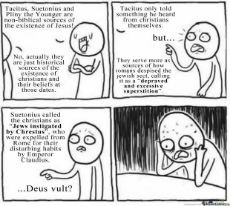
>>134702
Christianity is essentially just a form of judaism so this isn't really a problem. Atheists still largely hold (judeo)christian morality and (judeo)christian values.
Return to true Aryan religion will solve this problem.
Read the Vedas.
Christianity is essentially just a form of judaism so this isn't really a problem. Atheists still largely hold (judeo)christian morality and (judeo)christian values.
Return to true Aryan religion will solve this problem.
Read the Vedas.
>>137437
You clearly have no idea what you are talking about. I support individuality, nationalism, traditions, open market, gun ownership.. what have you, but there needs to be a healthy balance between where you are an individual, and when its better to think about social issues... when you need to keep traditions, and when they are starting to get in the way in a major way... the open market and capitalism isn't perfect either, and why shouldn't we strive to make it better for *everyone* where it doesn't hurt an individual?
all we centrists are is open minded instead of locking ourselves into extremism. As a lot of anons here are quick to point out, things are not binary, not black and white... and yet the same anons jump the gun on labels like "commie" or "nazi". I invite you to think for yourself rather than being part of a herd (unless its the pony herd, in which case, its all good, lets get cider)
You clearly have no idea what you are talking about. I support individuality, nationalism, traditions, open market, gun ownership.. what have you, but there needs to be a healthy balance between where you are an individual, and when its better to think about social issues... when you need to keep traditions, and when they are starting to get in the way in a major way... the open market and capitalism isn't perfect either, and why shouldn't we strive to make it better for *everyone* where it doesn't hurt an individual?
all we centrists are is open minded instead of locking ourselves into extremism. As a lot of anons here are quick to point out, things are not binary, not black and white... and yet the same anons jump the gun on labels like "commie" or "nazi". I invite you to think for yourself rather than being part of a herd (unless its the pony herd, in which case, its all good, lets get cider)
>>137452
>all we centrists are is open minded instead of locking ourselves into extremism
Oh my sweet summer anon.
Let's say, if we were to kill all cripples and deformed when they where born in our world, that would be pretty extreme, yet that was a normal practice in Sparta.
The thing you should be doing is applying critical thinking.
Everyone would love a perfect world, but I don't believe we have the answer for that yet, and hey, the otherworld might be Equestria for epona worshippers so, it's a worthwhile cause to die for.
>all we centrists are is open minded instead of locking ourselves into extremism
Oh my sweet summer anon.
Let's say, if we were to kill all cripples and deformed when they where born in our world, that would be pretty extreme, yet that was a normal practice in Sparta.
The thing you should be doing is applying critical thinking.
Everyone would love a perfect world, but I don't believe we have the answer for that yet, and hey, the otherworld might be Equestria for epona worshippers so, it's a worthwhile cause to die for.
>>137438
>not knowing how European pagans adopted Christianity either of their own volition or following their rulers
>not knowing how St. Boniface in a ballsy move cut down the "sacred tree" pagan Germans worshipped, proving their religion wrong in a single stroke
>not being able to distinguish the Christian incorporation and preservation of regional culture from the Islamic eradication of it
>not understanding how Jews and Christians were both expelled from Rome after the Jews (in their eternal hatred of all things Christian) started riots
>thinking that paganism originating in India of all places has more in common with European culture than Christianity which made Europe its home
You need Jesus.
>>137452
Once you delve into philosophy enough you'll realize that there are no grey areas in morality or truth. I hope you stay here long enough to establish yourself firmly on a side.
>>137455
>Third Position
Literally the Horseshoe Theory but for nationalists.
>not knowing how European pagans adopted Christianity either of their own volition or following their rulers
>not knowing how St. Boniface in a ballsy move cut down the "sacred tree" pagan Germans worshipped, proving their religion wrong in a single stroke
>not being able to distinguish the Christian incorporation and preservation of regional culture from the Islamic eradication of it
>not understanding how Jews and Christians were both expelled from Rome after the Jews (in their eternal hatred of all things Christian) started riots
>thinking that paganism originating in India of all places has more in common with European culture than Christianity which made Europe its home
You need Jesus.
>>137452
Once you delve into philosophy enough you'll realize that there are no grey areas in morality or truth. I hope you stay here long enough to establish yourself firmly on a side.
>>137455
>Third Position
Literally the Horseshoe Theory but for nationalists.
>>137598
Wow you are fucking deluded. If you studied even the most basic of linguistics alone, you could trace the histories of the Hyperborean peoples.
>proving religion wrong by cutting down Irminsul
You think that Irminsul was a tree and that cutting it down was proof of anything except the fear of the Karling kikes? Fuck yourself, damned cuck.
Wow you are fucking deluded. If you studied even the most basic of linguistics alone, you could trace the histories of the Hyperborean peoples.
>proving religion wrong by cutting down Irminsul
You think that Irminsul was a tree and that cutting it down was proof of anything except the fear of the Karling kikes? Fuck yourself, damned cuck.
>>137601
>Hyperborean peoples
You mean the mythical race of giants which is now used as a metaphor for Germanic and Nordic peoples among esoteric circles?
I am not a linguist, but explain to me how this all originated in India. Would that not also elevate the role of Gypsies of all people?
>Irminsul
Well, the people evidently thought so as they converted en masse after the event. Unless of course you'll tell me that they were converted at swordpoint and the whole historical account was fabricated.
>Karlings
Talk to almost any European traditionalist and they'll laud Charlemagne for his role in establishing European civilization. I don't lionize him to that extent but your opposition seems predicated on your rabid paganism.
>Hyperborean peoples
You mean the mythical race of giants which is now used as a metaphor for Germanic and Nordic peoples among esoteric circles?
I am not a linguist, but explain to me how this all originated in India. Would that not also elevate the role of Gypsies of all people?
>Irminsul
Well, the people evidently thought so as they converted en masse after the event. Unless of course you'll tell me that they were converted at swordpoint and the whole historical account was fabricated.
>Karlings
Talk to almost any European traditionalist and they'll laud Charlemagne for his role in establishing European civilization. I don't lionize him to that extent but your opposition seems predicated on your rabid paganism.
1522998773_1.png (76.7 KB, 1488x1470, d9cae6cfc4677fb3553d6dbffc4e1622d12be8edf80ad70d97310baf81eabf4c.png)
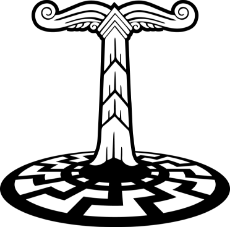
1522998773_2.jpg (14.2 KB, 109x400, 7f5b294956f781a42cc77957c2b65bcf734869e6d4cc017ba53f051f83420851.jpg)

>>137605
Do your own research faggot. I'm not here to spoonfeed you. Read some Plato, read the Sagas or at least Children of Odin, read the Vedic texts, and read the damned history of your people from an unkiked source, assuming you aren't actually a kike. And above all else, learn some linguistics. THEN come back and have a discussion.
Do your own research faggot. I'm not here to spoonfeed you. Read some Plato, read the Sagas or at least Children of Odin, read the Vedic texts, and read the damned history of your people from an unkiked source, assuming you aren't actually a kike. And above all else, learn some linguistics. THEN come back and have a discussion.
>>137635
>read a book
That's not an argument. I will eventually but considering my reading list is several dozen books deep (currently on Mein Kampf) that's not happening for the foreseeable future. I do recommend, however, that you read Aristotle, Confessions by St. Augustine, Summa Theologica, and the lives of the saints.
>read a book
That's not an argument. I will eventually but considering my reading list is several dozen books deep (currently on Mein Kampf) that's not happening for the foreseeable future. I do recommend, however, that you read Aristotle, Confessions by St. Augustine, Summa Theologica, and the lives of the saints.
>>136761
>You've tossed out a loaded question filled with what appears to be personal incredulity on the basis of either confusion or not understanding my point. That is highly irregular and to a point questionable.
Wait, genuine curiosity is "highly questionable" to you? I think that says more about you, than it does me.
>If it is not obvious enough to you yet, the answer you may be aching for is cold and simple
[YouTube] I Am (Final Doom Version) - Shadow the Hedgehog [OST]![]()
>I have no beliefs.
Sure you don't.
The rest of your post is little more than a combination of laughable mind-reading attempts, coupled with tangential rambling and assertions of "I'm not like those other girls!".
It's been fun watching you flip out over simple Socratic questioning, but I've about had my fill.
You've got one last chance to tell me what your beliefs are, before I show you what true mind-reading is.
>You've tossed out a loaded question filled with what appears to be personal incredulity on the basis of either confusion or not understanding my point. That is highly irregular and to a point questionable.
Wait, genuine curiosity is "highly questionable" to you? I think that says more about you, than it does me.
>If it is not obvious enough to you yet, the answer you may be aching for is cold and simple
[YouTube] I Am (Final Doom Version) - Shadow the Hedgehog [OST]
>I have no beliefs.
Sure you don't.
The rest of your post is little more than a combination of laughable mind-reading attempts, coupled with tangential rambling and assertions of "I'm not like those other girls!".
It's been fun watching you flip out over simple Socratic questioning, but I've about had my fill.
You've got one last chance to tell me what your beliefs are, before I show you what true mind-reading is.
1523009782.jpg (167.8 KB, 1203x1447, 312bacddb7d5240bf8f0e4ba7f9ee5ff57a5c30b827126fd185d56190d10e5c1.jpg)

>>137639
Aristotle was a fool who never understood a single word of Plato's genius. I genuinely wish the piece of shit had never been born.
>not an argument
Who said it was? It's a statement. The statement is that you are acting like a fool who would rather stay ignorant and spout bullshit to divide our people, than to seek truth, and a statement that I'm not going to spend the time to force it into your brain. **I'm shitposting right now due to insomnia.**
Aristotle was a fool who never understood a single word of Plato's genius. I genuinely wish the piece of shit had never been born.
>not an argument
Who said it was? It's a statement. The statement is that you are acting like a fool who would rather stay ignorant and spout bullshit to divide our people, than to seek truth, and a statement that I'm not going to spend the time to force it into your brain. **I'm shitposting right now due to insomnia.**
1523010662.jpg (114.8 KB, 576x312, smokey-bear-only-you-can-prevent-ignorance.jpg)

>>137655
>Aristotle a fool
Hmmm, whom should I take the word of? 2000 years of academics or philosophers, or some random guy on the internet? Tough choice.
As much as I like Plato, anyone who considers The Republic a model civilization does not have a valid political opinion.
A fool who seeks to learn more is better off than a genius who is complacent. Maybe when you catch up on sleep you can share your thoughts of wisdom, o great learned one!
>Aristotle a fool
Hmmm, whom should I take the word of? 2000 years of academics or philosophers, or some random guy on the internet? Tough choice.
As much as I like Plato, anyone who considers The Republic a model civilization does not have a valid political opinion.
A fool who seeks to learn more is better off than a genius who is complacent. Maybe when you catch up on sleep you can share your thoughts of wisdom, o great learned one!
>>137659
Or maybe you could stop shitposting and go finish mein kampf so you can start learning history and linguistics.
Or maybe you could stop shitposting and go finish mein kampf so you can start learning history and linguistics.
>>137662
I should, yes. Currently writing about communication, which is sadly unrelated to those subjects.
I should, yes. Currently writing about communication, which is sadly unrelated to those subjects.
>>137598
>Once you delve into philosophy enough you'll realize that there are no grey areas in morality or truth.
Only sith deals in absolutes
>Once you delve into philosophy enough you'll realize that there are no grey areas in morality or truth.
Only sith deals in absolutes
1523029610_1.png (3.2 MB, 960x1597, cuckstianity is totally not jewish.png)
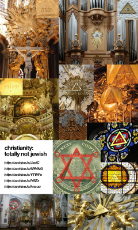
1523029610_2.png (109.4 KB, 815x510, christianity was invented by kikes and jesus was a jew.png)

>>137598
>not knowing how European pagans adopted Christianity either of their own volition or following their rulers
This is not true, they were forced by the sword, forced by the Romans, who were manipulated via usury.
>not knowing how St. Boniface in a ballsy move cut down the "sacred tree" pagan Germans worshipped, proving their religion wrong in a single stroke
This didn't prove anything other than christians being repulsive cancer and fulfilling the JEWISH old testament command of eradicating history and religion of nations they infiltrated.
>not being able to distinguish the Christian incorporation and preservation of regional culture from the Islamic eradication of it
christianity stole pagan traditions as a cheap mask to brainwash locals. they have no interest in preserving tradition.
>not understanding how Jews and Christians were both expelled from Rome after the Jews (in their eternal hatred of all things Christian) started riots
the christians were expelled from rome because they were as disgusting as jews. ancient christians were racial jews. there are many, many accounts of Roman loathing towards christians, who they called "jews of chrestus".
>thinking that paganism originating in India of all places has more in common with European culture than Christianity which made Europe its home
You clearly don't know history. Aryans are not from india, they are from around the Ukraine and they spread throughout the east, bleaching populations as they went. the Brahmin of india are 25% aryan and have preserved proto-IndoEuropean faith better than anywhere in Europe, due to the lack of semitic subversion.
>not knowing how European pagans adopted Christianity either of their own volition or following their rulers
This is not true, they were forced by the sword, forced by the Romans, who were manipulated via usury.
>not knowing how St. Boniface in a ballsy move cut down the "sacred tree" pagan Germans worshipped, proving their religion wrong in a single stroke
This didn't prove anything other than christians being repulsive cancer and fulfilling the JEWISH old testament command of eradicating history and religion of nations they infiltrated.
>not being able to distinguish the Christian incorporation and preservation of regional culture from the Islamic eradication of it
christianity stole pagan traditions as a cheap mask to brainwash locals. they have no interest in preserving tradition.
>not understanding how Jews and Christians were both expelled from Rome after the Jews (in their eternal hatred of all things Christian) started riots
the christians were expelled from rome because they were as disgusting as jews. ancient christians were racial jews. there are many, many accounts of Roman loathing towards christians, who they called "jews of chrestus".
>thinking that paganism originating in India of all places has more in common with European culture than Christianity which made Europe its home
You clearly don't know history. Aryans are not from india, they are from around the Ukraine and they spread throughout the east, bleaching populations as they went. the Brahmin of india are 25% aryan and have preserved proto-IndoEuropean faith better than anywhere in Europe, due to the lack of semitic subversion.
1523032317_1.jpg (196.4 KB, 714x862, JudeoChristianityIsAnOxymoron.jpg)

1523032317_4.jpg (106.5 KB, 733x577, StJustintheMartyronChosen.jpeg)

>>137706
You betray an ignorance of history. The Romans did not control the entirety of Europe, especially when they converted to Christianity in the 4th century. At that point they were invaded by pagan tribes who later converted and established the first medieval kingdoms. Later Christianity spread to Germany, Scandinavia, and Eastern Europe.
If you literally worship a stupid object, say, a plow, why shouldn't I break it? If you worship a cow like the Hindus do why shouldn't I prove its mortality? If you worship the moon as a god why shouldn't I prove its real status as a celestial object? Now you're just claiming I should be culturally "tolerant" like the leftists do.
If there was "no interest" in preserving tradition why are there festivals hundreds, even thousands, of years old, even including pre-Christian iconography such as Christmas trees and scarecrows? Why are Christians the loudest voice against the destruction of tradition?
You are not proving anything factual, you are just providing an opinion. Factually there were many racial Gentiles as Christians and only during the first years, when the debate raged on whether Christianity was Jewish (the decision was to sever ties with Judaism entirely) was the majority of Christianity Jewish because of its geographic location. But to you, Christianity is "eternally Jewish" even though our actual God was murdered by the Jews, expanded His ministry to Gentiles, and gave doctrine that opposed the Jewish practices of greed and nepotism.
Thank you for finally explaining something about the Brahmin. What is it that makes their proto-IndoEuropean faith so special?
You betray an ignorance of history. The Romans did not control the entirety of Europe, especially when they converted to Christianity in the 4th century. At that point they were invaded by pagan tribes who later converted and established the first medieval kingdoms. Later Christianity spread to Germany, Scandinavia, and Eastern Europe.
If you literally worship a stupid object, say, a plow, why shouldn't I break it? If you worship a cow like the Hindus do why shouldn't I prove its mortality? If you worship the moon as a god why shouldn't I prove its real status as a celestial object? Now you're just claiming I should be culturally "tolerant" like the leftists do.
If there was "no interest" in preserving tradition why are there festivals hundreds, even thousands, of years old, even including pre-Christian iconography such as Christmas trees and scarecrows? Why are Christians the loudest voice against the destruction of tradition?
You are not proving anything factual, you are just providing an opinion. Factually there were many racial Gentiles as Christians and only during the first years, when the debate raged on whether Christianity was Jewish (the decision was to sever ties with Judaism entirely) was the majority of Christianity Jewish because of its geographic location. But to you, Christianity is "eternally Jewish" even though our actual God was murdered by the Jews, expanded His ministry to Gentiles, and gave doctrine that opposed the Jewish practices of greed and nepotism.
Thank you for finally explaining something about the Brahmin. What is it that makes their proto-IndoEuropean faith so special?
>Christianity thread gets assaulted by kike puppets and commies masquerading as "thoughtful, free-thinking and caring individuals".
As expected in all honesty, but still immensely disappointing.
As expected in all honesty, but still immensely disappointing.
1523036940.png (380.1 KB, 1380x511, WhatJesusMeantByTurningTheOtherCheek.png)

>>137730
Satan is everywhere nowadays. Neo-pagans think they are more honestly "rejecting the Jew" but in reality they're just falling into an alternate, primitivist trap.
It's a clever and partly successful trick to split our movement. I see many influential figureheads parrot anti-Christian rhetoric.
Satan is everywhere nowadays. Neo-pagans think they are more honestly "rejecting the Jew" but in reality they're just falling into an alternate, primitivist trap.
It's a clever and partly successful trick to split our movement. I see many influential figureheads parrot anti-Christian rhetoric.
>>137738
Oh, I know that for sure. Neo-pagan traditionalist idealists have existed since the 19th century at least. I've encountered them across the internet including on Nationstates years back.
I don't mind the pagans at all, really, since I'm more of a "live and let live" attitude. What I do mind is when they criticize Christians as "cucks" and Christianity as a "Jewish religion" as if they could ever make any converts that way. I don't recall ever making an anti-pagan post in an Epona thread but if they keep on the offensive then the only response is to retaliate. I don't want that because such conflict is divisive.
Oh, I know that for sure. Neo-pagan traditionalist idealists have existed since the 19th century at least. I've encountered them across the internet including on Nationstates years back.
I don't mind the pagans at all, really, since I'm more of a "live and let live" attitude. What I do mind is when they criticize Christians as "cucks" and Christianity as a "Jewish religion" as if they could ever make any converts that way. I don't recall ever making an anti-pagan post in an Epona thread but if they keep on the offensive then the only response is to retaliate. I don't want that because such conflict is divisive.
>>137740
>Neo-pagan traditionalist idealists have existed since the 19th century at least
Yet a lot of the folks on here would refuse to be lumped in with those neo-pagan mouth-breathers.
>I don't mind the pagans at all...
See, there's your problem. Describing non-Abrahamic belief followers as "pagans" would be like us referring to all Abrahamic religious followers as "kikes". It already shows your ignorance.
>What I do mind is when they criticize Christians as "cucks"...
So giving the kikes the exclusive power of usury isn't self-cuckolding?
>...and Christianity as a "Jewish religion"
It is directly descended from judaism. It shares the same "the weak are the rulers, the strong should be beheaded" judeo-bolshevism as its predecessor.
>...as if they could ever make any converts that way.
We don't seek to convert anyone, nor do we think it'll happen. What we can do is point out the folly of crypto-kikes attempting to pretend like they have anything to be proud of.
>I don't want [retaliation] because such conflict is divisive.
Better divided into shills and actual posters, than the latter infiltrated by the former.
>Neo-pagan traditionalist idealists have existed since the 19th century at least
Yet a lot of the folks on here would refuse to be lumped in with those neo-pagan mouth-breathers.
>I don't mind the pagans at all...
See, there's your problem. Describing non-Abrahamic belief followers as "pagans" would be like us referring to all Abrahamic religious followers as "kikes". It already shows your ignorance.
>What I do mind is when they criticize Christians as "cucks"...
So giving the kikes the exclusive power of usury isn't self-cuckolding?
>...and Christianity as a "Jewish religion"
It is directly descended from judaism. It shares the same "the weak are the rulers, the strong should be beheaded" judeo-bolshevism as its predecessor.
>...as if they could ever make any converts that way.
We don't seek to convert anyone, nor do we think it'll happen. What we can do is point out the folly of crypto-kikes attempting to pretend like they have anything to be proud of.
>I don't want [retaliation] because such conflict is divisive.
Better divided into shills and actual posters, than the latter infiltrated by the former.
>>137914
I like how you categorize Christians as "shills."
Paganism is a good term because there are thousands of "folk religions" out there and no way am I naming them all. I am not using "non-Abrahamic" because that is politically correct wordplay.
>exclusive power of usury
If Christianity allowed usury you would then criticize us for that. But because Jews infiltrated our societies you blame us.
>weak are the rulers, the strong should be beheaded
Pic related. Unlike Judaism, Islam, and other religions, Christianity does not fall into a worldly idea of "strong vs. weak." Christ was murdered by the Pharisees for not being a "strong" conqueror. Individuals have different strengths and weaknesses and through the spiritual bonds of Christianity they complement each other like different sections of plate armor. This is why Christian society is so free and successful.
>not even trying to convert people
So basically a defeatist, a new Diogenes. What a great way to build up pride in one's culture and rebuild civilization.
>anything to be proud of
Gotta admit, art, architecture, and law pale in comparison to dancing around a tree in furs.
I like how you categorize Christians as "shills."
Paganism is a good term because there are thousands of "folk religions" out there and no way am I naming them all. I am not using "non-Abrahamic" because that is politically correct wordplay.
>exclusive power of usury
If Christianity allowed usury you would then criticize us for that. But because Jews infiltrated our societies you blame us.
>weak are the rulers, the strong should be beheaded
Pic related. Unlike Judaism, Islam, and other religions, Christianity does not fall into a worldly idea of "strong vs. weak." Christ was murdered by the Pharisees for not being a "strong" conqueror. Individuals have different strengths and weaknesses and through the spiritual bonds of Christianity they complement each other like different sections of plate armor. This is why Christian society is so free and successful.
>not even trying to convert people
So basically a defeatist, a new Diogenes. What a great way to build up pride in one's culture and rebuild civilization.
>anything to be proud of
Gotta admit, art, architecture, and law pale in comparison to dancing around a tree in furs.
>>137740
Speaking on behalf of the pagans on this board as the one who created the Epona thread, I have refrained from at all attacking Christianity even if I have felt an inkling to do so. I am more or less non-sectarian. If you may, the person baring the most attacks Christians here is a single person, so I suggest disregarding any hysteria of a perceived threat. I believe he hasn't even condoned of a single religion officially. As for the Epona threads, I have taken a temporary break from it, and will likely revive it on June 13th. The feast day for Epona.
>>137923
Not joining in this mess, but I will say this: Greece and Rome carried civilisation to its greatest heights largely without the presence of Christianity.
Speaking on behalf of the pagans on this board as the one who created the Epona thread, I have refrained from at all attacking Christianity even if I have felt an inkling to do so. I am more or less non-sectarian. If you may, the person baring the most attacks Christians here is a single person, so I suggest disregarding any hysteria of a perceived threat. I believe he hasn't even condoned of a single religion officially. As for the Epona threads, I have taken a temporary break from it, and will likely revive it on June 13th. The feast day for Epona.
>>137923
Not joining in this mess, but I will say this: Greece and Rome carried civilisation to its greatest heights largely without the presence of Christianity.
>>136820
>Tier 0
>Roman empire still rules the world
>All conspiracies are true
>There is no conspiracy
I agree with another poster - what IS this autism?
>Tier 8
>Runescape conspiracies (Mainly .nyc)
I would like to know more.
>Tier 0
>Roman empire still rules the world
>All conspiracies are true
>There is no conspiracy
I agree with another poster - what IS this autism?
>Tier 8
>Runescape conspiracies (Mainly .nyc)
I would like to know more.
1523108274.jpg (135.6 KB, 601x790, TACITUS jews are sinister and revolting.jpg)

>>137713
>You betray an ignorance of history.
"N-No, YOU don't know history!"
Nothing you posted here contradicts my statement. Christianity was spread by subversion and the sword.
>If you literally worship a stupid object, say, a plow, why shouldn't I break it? If you worship a cow like the Hindus do why shouldn't I prove its mortality? If you worship the moon as a god why shouldn't I prove its real status as a celestial object? Now you're just claiming I should be culturally "tolerant" like the leftists do.
If you worship the god of a foreign, child sacrificing, pedorape, semitic death cult, then shouldn't I prove it's non-Aryan origin and non-Aryan nature?
>If there was "no interest" in preserving tradition why are there festivals hundreds, even thousands, of years old, even including pre-Christian iconography such as Christmas trees and scarecrows?
I've already explained this and they've already subverted the original traditions in everything beyond aesthetic.
>Why are Christians the loudest voice against the destruction of tradition?
Destruction of (((tradition))).
>You are not proving anything factual, you are just providing an opinion.
jej no
>Factually there were many racial Gentiles as Christians and only during the first years, when the debate raged on whether Christianity was Jewish (the decision was to sever ties with Judaism entirely) was the majority of Christianity Jewish because of its geographic location.
Because it's a filthy, anti-aryan semite religion started by filthy semites. It's a precursor to communism.
>But to you, Christianity is "eternally Jewish" even though our actual God was murdered by the Jews, expanded His ministry to Gentiles, and gave doctrine that opposed the Jewish practices of greed and nepotism.
Yeshua AKA YHWH is Salvation claimed to BE the god of the kikes, that's why they killed him, you assclown. It's not your god, it's the jewish god and it always will be.
Read Tacitus. Read any of the numerous Roman accounts depicting jews of chrestus as some of the most disgusting and depraved individuals they encountered on their travels.
>You betray an ignorance of history.
"N-No, YOU don't know history!"
Nothing you posted here contradicts my statement. Christianity was spread by subversion and the sword.
>If you literally worship a stupid object, say, a plow, why shouldn't I break it? If you worship a cow like the Hindus do why shouldn't I prove its mortality? If you worship the moon as a god why shouldn't I prove its real status as a celestial object? Now you're just claiming I should be culturally "tolerant" like the leftists do.
If you worship the god of a foreign, child sacrificing, pedorape, semitic death cult, then shouldn't I prove it's non-Aryan origin and non-Aryan nature?
>If there was "no interest" in preserving tradition why are there festivals hundreds, even thousands, of years old, even including pre-Christian iconography such as Christmas trees and scarecrows?
I've already explained this and they've already subverted the original traditions in everything beyond aesthetic.
>Why are Christians the loudest voice against the destruction of tradition?
Destruction of (((tradition))).
>You are not proving anything factual, you are just providing an opinion.
jej no
>Factually there were many racial Gentiles as Christians and only during the first years, when the debate raged on whether Christianity was Jewish (the decision was to sever ties with Judaism entirely) was the majority of Christianity Jewish because of its geographic location.
Because it's a filthy, anti-aryan semite religion started by filthy semites. It's a precursor to communism.
>But to you, Christianity is "eternally Jewish" even though our actual God was murdered by the Jews, expanded His ministry to Gentiles, and gave doctrine that opposed the Jewish practices of greed and nepotism.
Yeshua AKA YHWH is Salvation claimed to BE the god of the kikes, that's why they killed him, you assclown. It's not your god, it's the jewish god and it always will be.
Read Tacitus. Read any of the numerous Roman accounts depicting jews of chrestus as some of the most disgusting and depraved individuals they encountered on their travels.
>>137960
>Christianity split off from and rejected Judaism but it's still just as bad REEEEEEEE
You're not winning anyone over here, you're just sperging out over a religion you don't understand. Go celebrate your "Aryan" cult in a different thread and prove how it's somehow more "moral."
>Christianity split off from and rejected Judaism but it's still just as bad REEEEEEEE
You're not winning anyone over here, you're just sperging out over a religion you don't understand. Go celebrate your "Aryan" cult in a different thread and prove how it's somehow more "moral."
>>137964
I sense a bit of hostility here. Is it already time to pull the guns on each other? Seems like this little religious conflict has the potential to cause a civil war on MLPOL.
I sense a bit of hostility here. Is it already time to pull the guns on each other? Seems like this little religious conflict has the potential to cause a civil war on MLPOL.
>>137966
>>137964
Maybe religion is just a moral code to ensure our society doesn't falls apart and the gods are used as ways to ensure we have a reason to follow such code.
Maybe it is us that gives power to the gods, as there are no gods because we ourselves generate that power.
I'm just shitposting ain't I
>>137964
Maybe religion is just a moral code to ensure our society doesn't falls apart and the gods are used as ways to ensure we have a reason to follow such code.
Maybe it is us that gives power to the gods, as there are no gods because we ourselves generate that power.
I'm just shitposting ain't I
103 replies | 68 files | 41 UUIDs | Archived
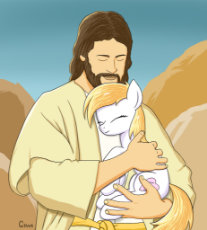

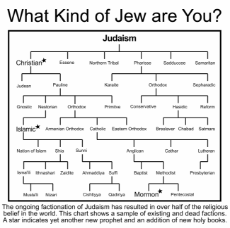



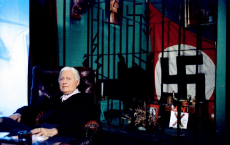


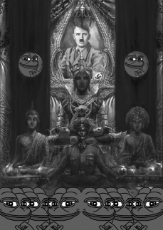
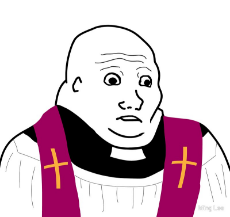
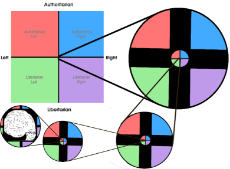
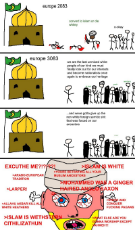
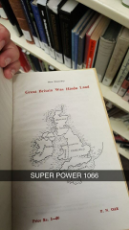
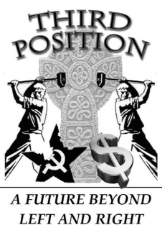
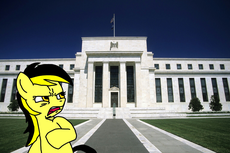
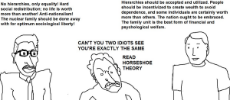


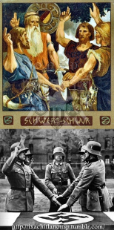
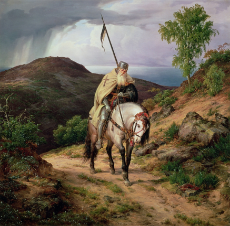




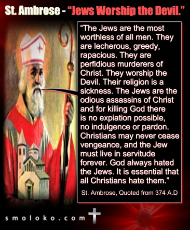






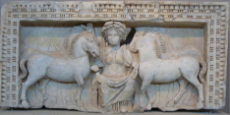




 Ex: Type :littlepip: to add Littlepip
Ex: Type :littlepip: to add Littlepip  Ex: Type :eqg-rarity: to add EqG Rarity
Ex: Type :eqg-rarity: to add EqG Rarity 